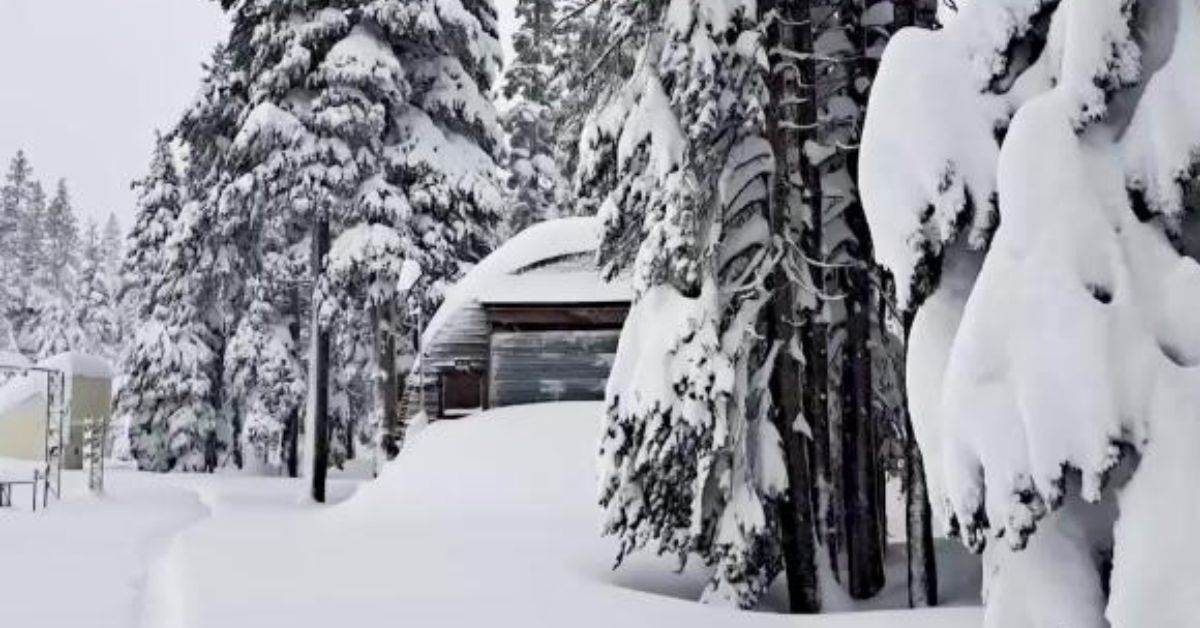On Monday, a severe winter storm with wind gusts of up to 80 miles per hour was moving toward the heartland of the United States. This storm had the potential to blanket a large portion of the country with snowfall that was measured in feet.
On Monday, there were severe weather watches and warnings issued for over 15 million people across more than a dozen states. Parts of the states of Oregon, Nevada, Idaho, North Dakota, South Dakota, Wyoming, Colorado, and Nebraska were under blizzard or winter storm warnings.
According to the Storm Prediction Center of the National Weather Service, “This system will then stall across the central Plains into Thursday, producing several days of heavy snow and blowing snow, including blizzard conditions, and freezing rain extending into the Upper Midwest.” This was stated in the advisory that was issued by the Storm Prediction Center. “Severe thunderstorms, tornadoes, and flooding are all possibilities in the South,” the National Weather Service said.
According to the center, parts of those states could receive up to two feet of snow. The Colorado meteorological service predicted that the storm would come late on Monday night and continue into Tuesday. They also predicted that it would bring “whiteout conditions” and likely cause road closures.
The Colorado meteorological service reported that by Monday night, the snow had begun to fall over the northern mountains of the state, causing routes to become slick and snow packed. The prediction center issued a stern warning about the impending winter storm, stating that “heavy snow will likely build to more than 1 foot in certain regions,” which, coupled with high gusts, will make it practically difficult to move.
After pummeling sections of Southern California with more than 7 inches of rain and hammering the mountains of the Golden State with up to 5 feet of snow, the storm was preparing to make its way toward the heartland of the United States. According to FlightAware.com, more than 6,000 planes in the United States were delayed on Sunday, and more than 4,500 had been delayed by the time Monday night rolled around.
Beginning this week in the northern Plains, AccuWeather analysts are predicting over a foot of snow, severe winds, and blizzard conditions. This storm may potentially dump considerable amounts of snow throughout a wider part of the Midwest.
The National Weather Service defines a blizzard as “blowing and/or falling snow with winds of at least 35 mph, decreasing visibilities to a quarter of a mile or less” for at least three hours. Blizzards can also occur when snow is blowing and/or falling without the presence of winds.
The Whole Country Has Had Two Weeks Of “Bitterly” Cold Weather
In addition, the storm prediction center warned that “bitterly” cold temperatures are likely to affect the lower 48 states between the dates of December 20 and December 26 and leading up to those dates as well.
According to the center, the northern Rocky Mountains and northern plains might experience temperatures in the minus teens, while the Central Plains could witness temperatures below zero. Both of these predictions are based on data from the center.
According to the center’s projections, areas in the south and east, including the Great Lakes, Ohio Valley, Mid-Atlantic states, and Northeast, would experience temperatures in the single digits and teens. Temperatures much below freezing are forecast for the Southern Plains and Southeast regions of the United States.

Storms That Get Worse Are Expected In The South-central US
Accuweather said that violent thunderstorms could bring hail, wind gusts of up to 80 mph, and even tornadoes to states that won’t get snow. AccuWeather says that there will be a “significant risk” to lives and property in parts of Kansas, Oklahoma, and northern Texas on Monday night and Tuesday.
The dangerous system could then go after cities like Springfield, Missouri, Little Rock, Arkansas, Houston, Texas, and New Orleans, Louisiana. At the end of November, deadly tornadoes hit some of the same cities and towns that were at risk from the severe thunderstorms.
Meteorologist Renee Duff from AccuWeather said, “The big difference between the warm, humid air before the storm and the cold, dry air after the storm will set up the right conditions for a burst of severe weather.”
The weather service said that the south-central can also expect heavy snow and blizzards and that the north-central Plains and Upper Midwest are likely to see “a wintry mix” on Tuesday.
Heavy Rain And Snow Hit California Hard
The weather service’s prediction center says that some parts of the Sierra Nevada got more than 5 feet of snow. The weather service said that there was more than 7 inches of rain in Ventura and San Luis Obispo counties.
In San Luis Obispo County, roads were flooded and strong winds downed power lines with gusts of up to 80 mph. PG&E says that over the weekend, the power went out for hours for almost 30,000 customers.
Early on Monday, the weather service put out a special weather report for Oxnard, which is 60 miles west of downtown Los Angeles. It said that there could be 50 mph winds and half-inch hail.
“Find shelter in a strong building,” said the statement.
We appreciate your time and look forward to hearing your thoughts on this subject. If so, we’d love to hear your insights in the space provided below. You may get more of these updates by adding Journalistpr.com. to your bookmarks.

Leave a Reply